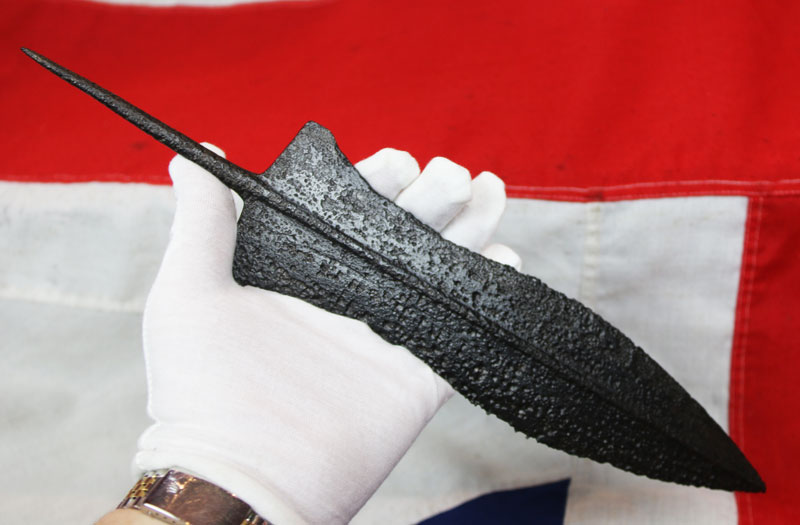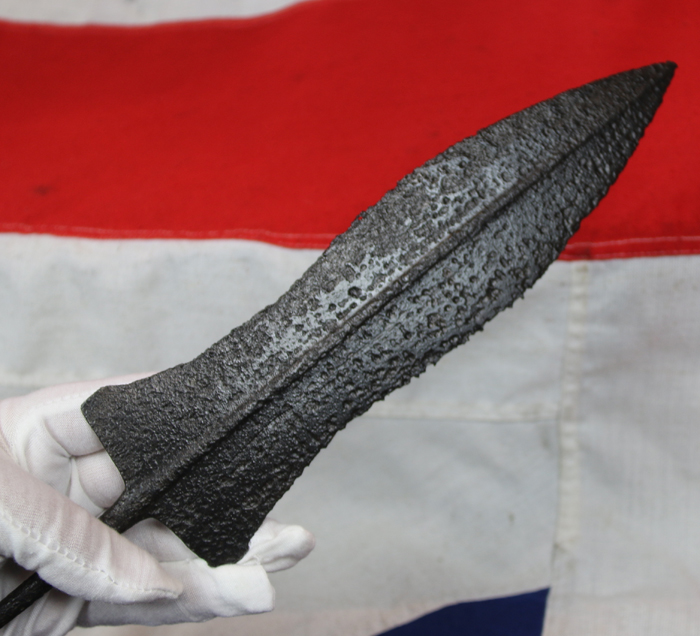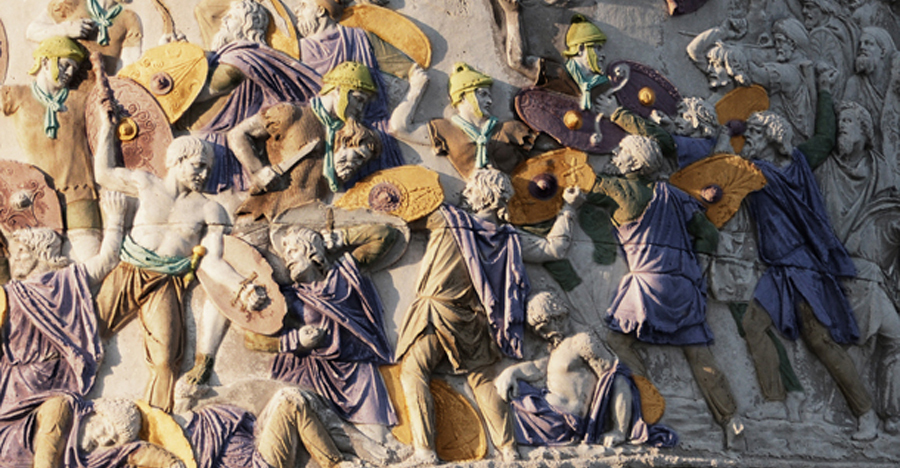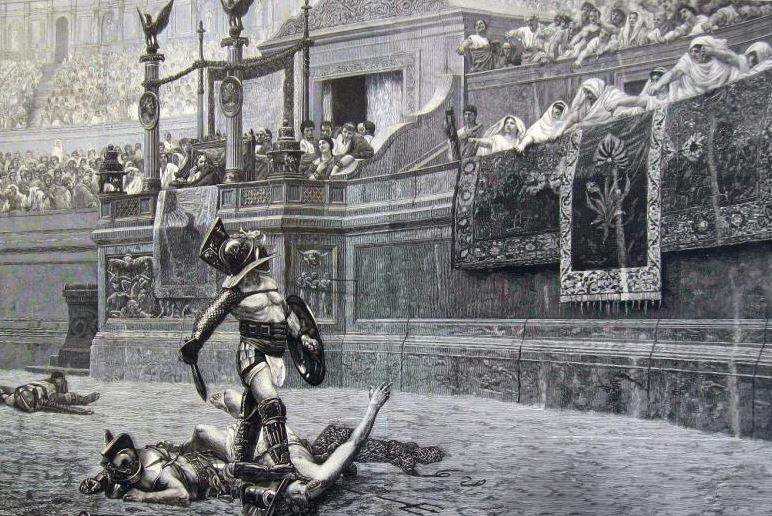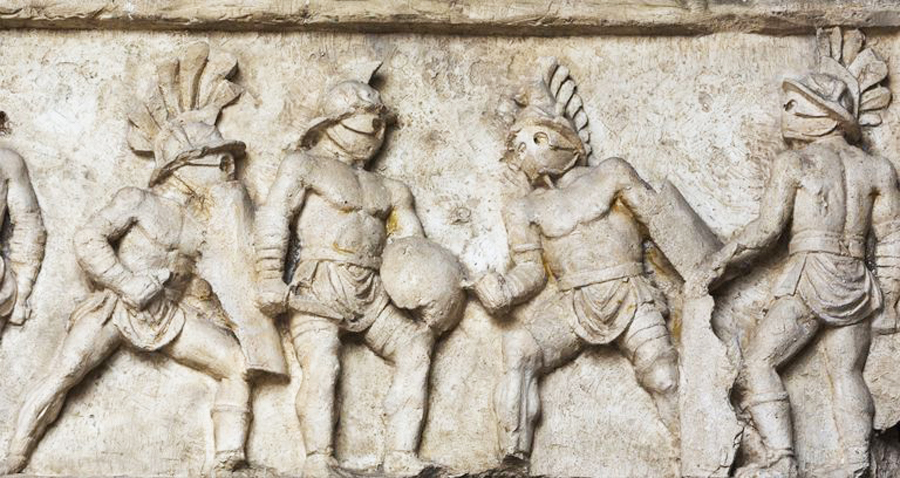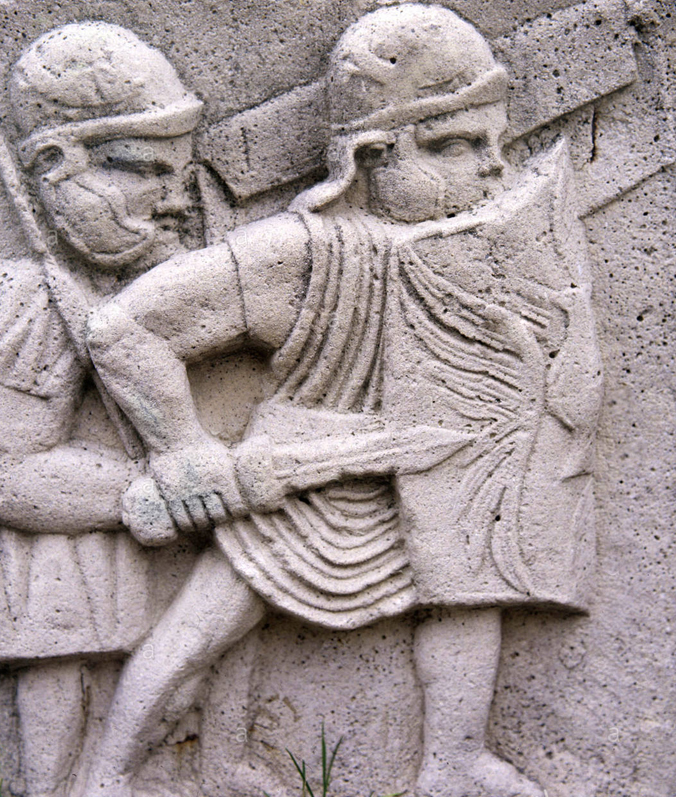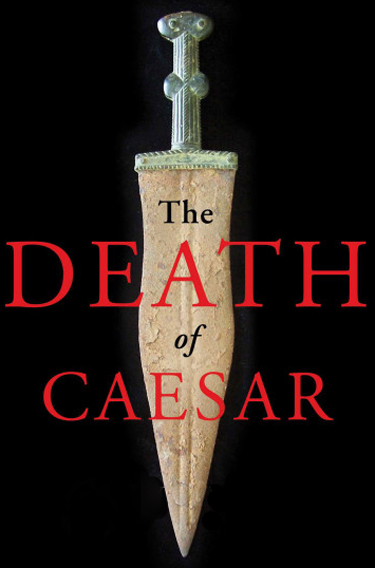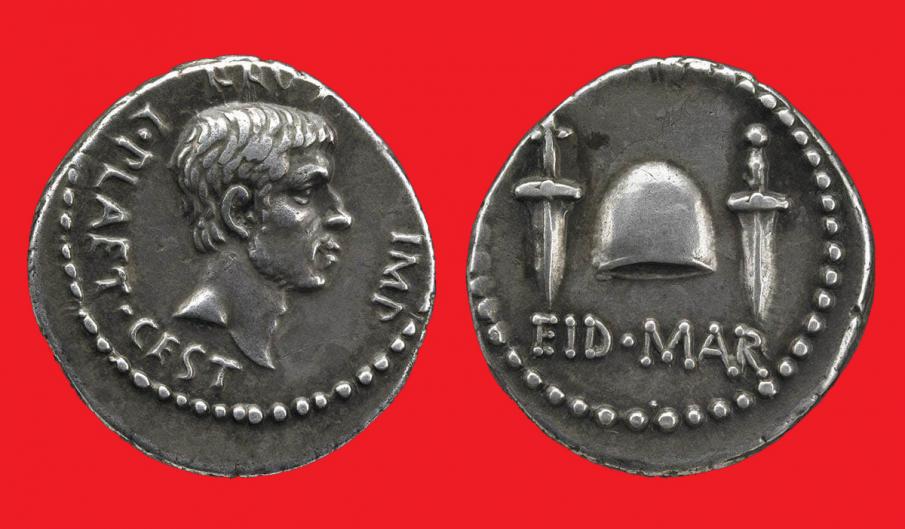A Superb 2000 Year Old Rare Roman Legionary's or Gladiator's Pugio Dagger, One Of The Best Examples We Have Seen in Over A Decade
reserved A simply superb, original artifact of Ancient Rome. from the time of the Great Julius Caeser, and the subsequent Emperors, Augustus, Tiberius, Caligula, Claudius, and Nero. The very form and type of dagger that was used to assassinate the great Julius Caesar on the Ides of March, and that was actually depicted at the time on a Roman coin, the "Brutus “Eid Mar” Denarius", considered by some to be the rarest and most important coin ever made in Roman history see photo 8 in our gallery and the only coin minted to openly celebrate a murder.
Plus, the highly distinctive pugio dagger was an essential weapon of the roman legionaries. The hilts of original roman swords and daggers very rarely survive to today, as their material of construction such as wood, ivory, horn or bone does not last as long over 2000 years as the iron blades can. Only the very few that had cast bronze hilts remain intact. The pugio (plural: pugiones) was a dagger used by Roman soldiers as a sidearm, and it seems most likely that the pugio dagger was intended as an auxiliary weapon, after the sword or lance. Officials of the empire took to wearing ornate daggers in the performance of their offices, and some would wear concealed daggers as a defence against contingencies. The dagger was a common weapon of assassination and suicide; for example, the conspirators who stabbed Julius Caesar used pugiones. Roman writer Vegetius, wrote
"A stroke with the edges, though made with ever so much force, seldom kills. On the contrary, a stab, though it penetrates but two inches, is generally fatal. If the body is covered while a thrust is given, and the adversary receives the point before he sees the sword." This was the method of fighting principally used by the Romans. There are a number of surviving Roman depictions of soldiers slashing with their weapons in addition to stabbing with them. This is shown best on the Adamklissi metopes.
Attempts to cast pugios in the role of utility knives are misguided, as the blade form is not suited to this purpose, it being far better suited for use as a close quarter weapon. Small utility knives are found in profusion at military sites and there is no reason to think that soldiers needed to use their pugios for anything other than fighting. Tacitus reports that Gnaeus Domitius Corbulo had a soldier executed for not wearing a sword while digging a trench and another for wearing only a pugio in the same activity. The pugio became an ornate sidearm of officers and dignitaries as well, a custom reminiscent of the knives after which the Saxons were named. These Germanic mercenaries served in the Roman army. The emperors came to wear a dagger to symbolize the power of life and death. The emperor Vitellius attempted to resign his position and offers his dagger to the consul, but it was refused and Vitellius was forced to stay by popular acclaim and the Praetorian guard. Tacitus also relates that a centurion, Sempronius Densus, of the Praetorian guard drew a dagger to save Lucius Calpurnius Piso Licinianus momentarily. One picture in the gallery is from Barry Strauss book the Death of Caesar, it shows a complete original pugio with its intact cast bronze hilt, the blade shape of ours is identical and highly identifiable. This blade is superb, with an aged russetted surface condition as normal for surviving Roman iron blades today. Blade. 14 1/4 inch blade length total. An original silver minted version of the "Brutus “Eid Mar” Denarius today can sell for around $ 500,000 it is estimated for there to be only around 56 surviving examples and the gold minted version, recently sold for $4.2 million and it is estimated for there to be only 2 surviving examples. It thus makes this original pugio dagger, from the same period, to be somewhat of a bargain by comparison.
Code: 23163

